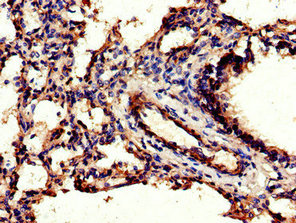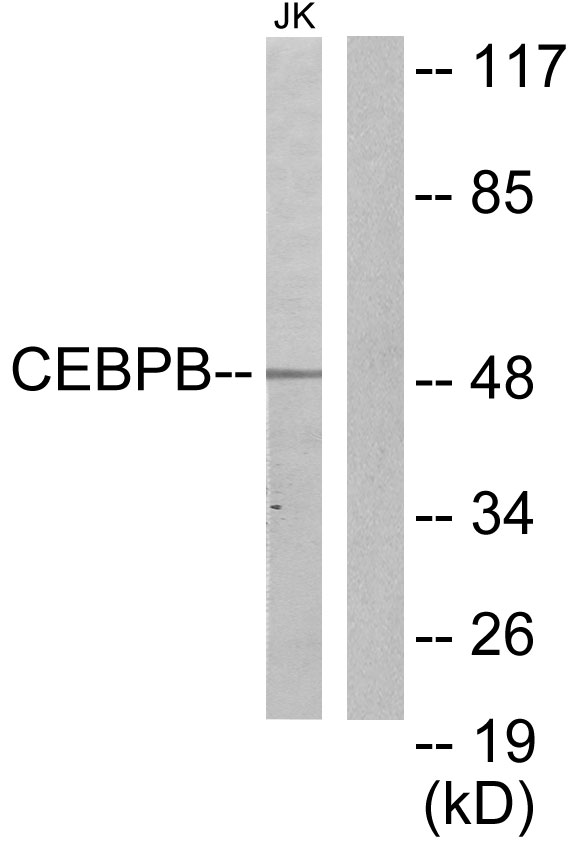
Immunohistochemistry of paraffin-embedded human lung tissue using CSB-PA005181LA01HU at dilution of 1:100
CEBPB Antibody
CSB-PA005181LA01HU
ApplicationsELISA, ImmunoHistoChemistry
Product group Antibodies
ReactivityHuman
TargetCEBPB
Overview
- SupplierCusabio
- Product NameCEBPB Antibody
- Delivery Days Customer20
- ApplicationsELISA, ImmunoHistoChemistry
- CertificationResearch Use Only
- ClonalityPolyclonal
- ConjugateUnconjugated
- Gene ID1051
- Target nameCEBPB
- Target descriptionCCAAT enhancer binding protein beta
- Target synonymsC/EBP-beta, IL6DBP, NF-IL6, TCF5, CCAAT/enhancer-binding protein beta, CCAAT/enhancer binding protein (C/EBP), beta, interleukin 6-dependent DNA-binding protein, nuclear factor NF-IL6, nuclear factor of interleukin 6, transcription factor 5, transcription factor C/EBP beta
- HostRabbit
- IsotypeIgG
- Protein IDP17676
- Protein NameCCAAT/enhancer-binding protein beta
- Scientific DescriptionImportant transcription factor regulating the expression of genes involved in immune and inflammatory responses (PubMed:1741402, PubMed:9374525, PubMed:12048245, PubMed:18647749). Plays also a significant role in adipogenesis, as well as in the gluconeogenic pathway, liver regeneration, and hematopoiesis. The consensus recognition site is 5-T[TG]NNGNAA[TG]-3. Its functional capacity is governed by protein interactions and post-translational protein modifications. During early embryogenesis, plays essential and redundant functions with CEBPA. Has a promitotic effect on many cell types such as hepatocytes and adipocytes but has an antiproliferative effect on T-cells by repressing MYC expression, facilitating differentiation along the T-helper 2 lineage. Binds to regulatory regions of several acute-phase and cytokines genes and plays a role in the regulation of acute-phase reaction and inflammation. Plays also a role in intracellular bacteria killing (By similarity). During adipogenesis, is rapidly expressed and, after activation by phosphorylation, induces CEBPA and PPARG, which turn on the series of adipocyte genes that give rise to the adipocyte phenotype. The delayed transactivation of the CEBPA and PPARG genes by CEBPB appears necessary to allow mitotic clonal expansion and thereby progression of terminal differentiation (PubMed:20829347). Essential for female reproduction because of a critical role in ovarian follicle development (By similarity). Restricts osteoclastogenesis (By similarity).
- ReactivityHuman
- Storage Instruction-20°C or -80°C
- UNSPSC41116161





